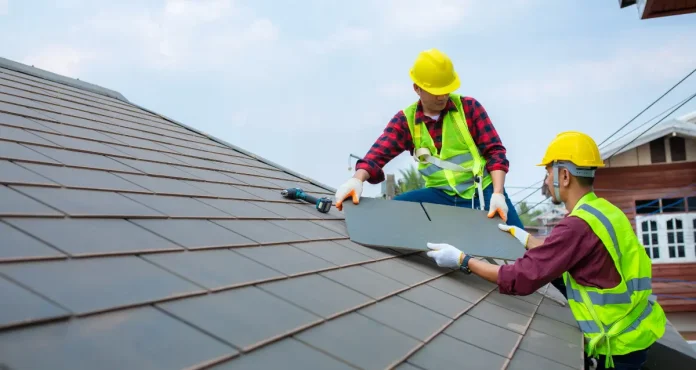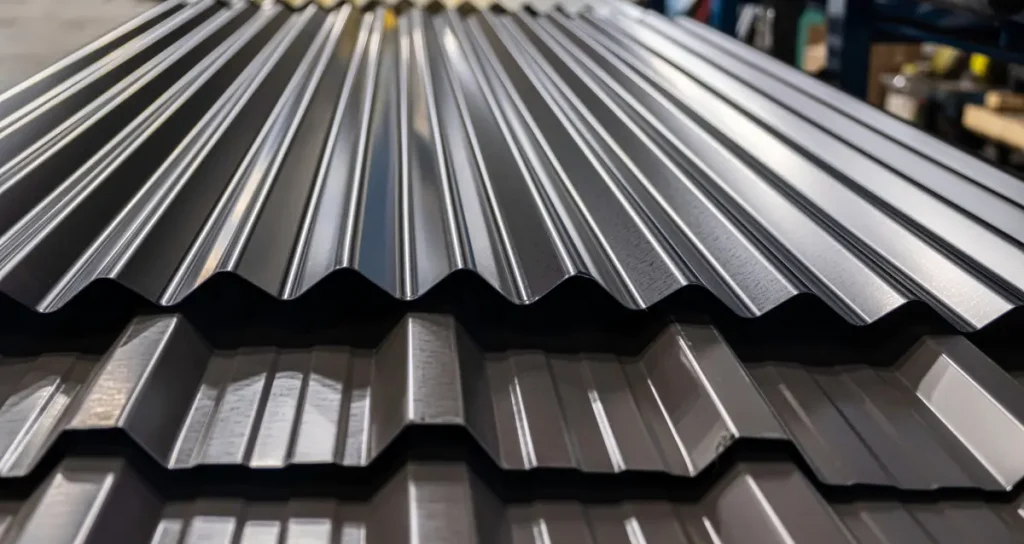
Choosing the right roof tiles can be a game-changer, especially when you plan to install solar systems. This guide explores various types of roof tiles and how they pair with solar systems to ensure you make an informed decision.
Whether you prefer classic clay, durable concrete, or sleek metal tiles, we’ve got you covered. Dive in to discover which roof tile works best for your energy-efficient home.
Common Types of Roof Tiles
Here are short descriptions of some of the most common types of roof tiles. Understanding the characteristics of each type can help you make an informed decision when pairing them with a solar system.
Asphalt Shingles
Asphalt shingles are one of the most popular roofing materials in the United States. They are made from a base material like fiberglass or organic felt, which is coated with asphalt to make them waterproof. An added layer of ceramic granules helps protect the shingles from UV rays and adds color.
Asphalt shingles are lightweight, affordable, and relatively easy to install, making them an excellent choice for many homeowners. Plus, they work well with solar panels by providing a sturdy and durable base for installation.
Clay Tiles
Clay tiles are another popular choice among roof tile varieties. They are crafted from natural clay that is shaped and then baked to harden. These tiles are well-known for their durability and resistance to harsh weather conditions, which makes them a long-lasting option for homeowners.
Clay tiles have a classic, rustic look, often seen in Mediterranean and Spanish-style homes. They are also energy-efficient, as they can reflect sunlight and keep your home cooler. When it comes to combining clay tiles with a solar system, you may need specialized mounting hardware to ensure a secure and effective installation.
Concrete Tiles
Concrete tiles are a strong and sturdy roofing option made from a mixture of sand, cement, and water. These tiles are known for their long-lasting nature and ability to withstand harsh weather. They come in a variety of colors and styles, allowing them to fit different home designs.
Because they are heavy, concrete tiles provide a solid base for installing solar panels. However, it’s important to ensure your roof structure can support its weight before choosing this option. With proper setup, concrete tiles can be a great match for solar systems.

Metal Roofs
Metal roofs are a popular choice due to their durability and long life. Made from materials like steel, aluminum, or copper, metal roofs can last up to 50 years or more. They are resistant to extreme weather conditions such as heavy rain, strong winds, and even hail. Metal roofs are also lightweight, which means they put less strain on your home’s structure.
One of the biggest advantages of metal roofs is that they are very easy to install solar panels on. The flat surface makes it simple to attach the panels securely, and the strength of the metal provides a sturdy base.
Additionally, metal roofs are reflective, helping to keep your home cooler by bouncing back the sun’s rays. This can be a big plus when it comes to energy efficiency.
Key Considerations for Pairing Roof Tiles With Solar Systems
Here are some important factors to keep in mind when pairing roof tiles with solar systems. These considerations will help ensure that your installation is effective and visually appealing, while also safeguarding the integrity of your roof.
Weight and Structural Support
When installing solar panels, it’s essential to consider the weight and structural support of your roof tiles. Different types of tiles have different weights, and not all roofs can support the additional load of solar panels. For example, clay and concrete tiles are heavier than asphalt shingles or metal roofs.
Ensuring your roof structure can handle the weight of both the tiles and the solar panels is crucial to avoid damage and ensure long-term stability. To make an informed decision, you can learn which solar panels are best for residential homes.
Installation Ease
Another key factor to think about is how easy it is to install solar panels on your roof. Some types of roof tiles, like asphalt shingles, are easier to work with because they are lightweight and straightforward to install. This can save time and money when setting up your solar system.
On the other hand, tiles like clay or concrete might need special tools or extra steps to make sure the panels are secure. The smoother and simpler the installation process, the quicker you can start enjoying the benefits of your solar energy system.
Durability and Maintenance
The durability of your roof tiles is an important factor when adding solar panels. Some tiles, like clay and concrete, are very strong and can last many years without much upkeep. This makes them good choices for supporting solar panels long-term. However, these tiles may need a bit more care to keep them in good shape.
On the other hand, asphalt shingles are easier to install but might not last as long as clay or concrete tiles. They can still be a good option for solar panels if you are willing to replace them more often.
Regular maintenance is also key to keeping your roof and solar panels in good condition. Checking for any damage or wear and tear can help prevent bigger problems down the line. Simple tasks like cleaning the panels and checking the tiles can go a long way in making your solar system last.
Learn All About Types of Roof Tiles
In conclusion, picking the right types of roof tiles for your solar panels is important. Different tiles, like asphalt shingles, clay, concrete, and metal, have their pros and cons. Think about things like weight, installation ease, and durability.
Make sure your roof can handle the weight of the panels and pick tiles that will last. Keep your roof and panels in good shape with regular maintenance. This way, your solar system will work well and look good too.
Did you find this article helpful? Check out the rest of our blog.
READING FURTHER









